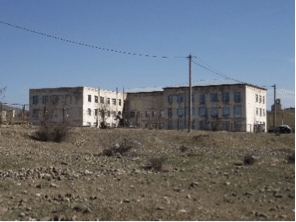The instructions were clear yet repeated several times, “Be there 3pm. Across from teacher room. Wear all black”. My students wanted to make sure I would not be late for my first dance rehearsal with Adishi, the school’s Georgian dance group. I had just begun teaching English in the Republic of Georgia and wanted to learn more about the culture which valued family, tradition, and the arts. With a teaching schedule that had me working less than twenty hours a week, I was eager and desperate to get involved wherever I could
Georgia has similar values to Mediterranean countries but borders the Black Sea, situated below Russia and above Turkey. For such a small country, it is as unique and dynamic as its neighbors with a distinctive language, starchy but delicious food, and traditional folk dances that are a strong source of pride for all citizens. As a fun way to immerse myself in Georgian culture, I was hoping to attend a few dance lessons and learn a few moves. Based on my research, it looked like Georgians always had a dance prepared which they could perform at weddings, restaurants, or even on the streets!
https://www.youtube.com/watch?v=8wYMJeol5vU
I couldn’t wait to see what the first rehearsal had in store.
At 3pm sharp, I arrived at school in my flexible “funeral” clothes with a pair of dance shoes that my host sister lent me. I enter the dusty auditorium to see two dozen pint-sized dancers staring at me. The older students showed me where to stand and flashed supportive smiles as I followed an intense and painful warm-up regimen (I felt bones crack that I didn’t even know I had). My students proceeded to sit me down and show me their recent work, performing enchanting regional folk dances from Svanuri and Adjaruli (descriptions are in this link).
http://tlg.gov.ge/content.php?id=142&lang=eng
We ended the class by joining hands and doing a traditional Turkish dance where each student had their 10-20 seconds of fame (including me!)
Chuck Davis, artistic director and founder of DanceAfrica, said “to understand the culture, study the dance. To understand the dance, study the people”. By studying the dance, I learned how gender roles are reflected by the strong, swift movements of males and smooth, sweeping gestures of females. By engaging with my students, host family, and community members, I learned that performing their regional dance is how Georgians show pride for their country. It’s a good thing my students were so clear on those instructions or I would have missed out on some incredible experiences.
Written by Hannah Strack
Dance and Performing Arts Abroad guest blogger
